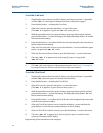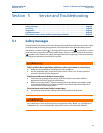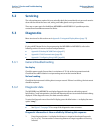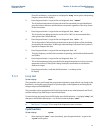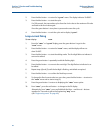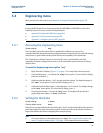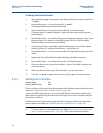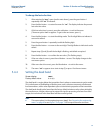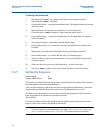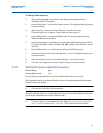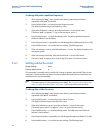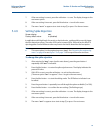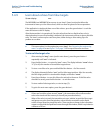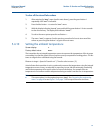
50
Reference Manual
IP2048/RM, Rev AA
Section 5: Service and Troubleshooting
February 2015
To change the threshold value
1. After entering the “Eng” menu (see the note above), the first menu option indicated is
“t.HoLd”.
2. Press the blue button
to enter the menu for “t.HoLd”.
The display indicates the present threshold value.
3. If the threshold value is correct, press the red button
to exit to the menu.
(The menu option “t.HoLd” re-appears. To get to the next menu option, press the
green button
).
4. Press the blue button
to start the editing mode. If the present setting is “Auto”, press
the green button
to change to a three digit number. The first of the three digits
flashes to indicate a number can now be edited.
5. Press the green button
repeatedly to edit the flashing digit. (To restore the “Auto”
setting, scroll past “9” and press the red button
to save and exit).
6. Press the blue button
to move to the next digit. The digit flashes to indicate it can be
edited.
7. Repeat steps (5) and (6) until the last digit is flashing, and edited as required.
8. Press the blue button
to confirm the new value. (The flashing stops.)
9. If the new value is correct, press the red button
to save. The display changes to the
next menu option.
10. If the new value is incorrect, press the blue button
to exit to the menu.
11. The menu “t.HoLd” re-appears to re-start at step (2) or press
for the next menu.
5.4.3 Setting lost echo time
Screen display: LE
Factory default value: 900
The lost echo time is the seconds that the transmitter will wait before taking the lost echo alarm
action (see “Selecting the alarm condition action” on page 39).
A value up to 9999 can be entered. It is recommended that the lost echo time remains set to
900 seconds to avoid false trips and alarms from a temporary loss of echo caused by transient
poor surface conditions.
A lower lost echo time should only be programmed if it is important that the lost echo alarm
action is taken more quickly (see “Selecting the alarm condition action” on page 39).
Note
This menu option is in the engineering menu “Eng”. See “Accessing the engineering
menu” on page 49 or see Figure C-3 on page 79 for a map of the menu structure.



